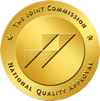There are many reasons and causes for addiction but woven through the maze of each individual’s struggle with substance use disorder, you will often find a need to numb the experience of life. Of course, we cannot selectively numb emotions. When we numb the painful emotions, we also numb the positive emotions. And so, for some individuals, this is where the pursuit of a “trazodone high” begins.
What Is Trazodone?
At its core, trazodone is a prescription medication. It belongs to the class of antidepressants known as serotonin modulators. These medications are designed to alter the balance of certain chemicals in the brain, particularly serotonin, which plays a crucial role in mood stabilization.

The Intended Use of Trazodone
Life, with its intricate tapestry of emotions, often throws challenges that make people feel overwhelmed, lost, or disconnected. For them, trazodone serves to moderate the emotions that come with the ups-and-downs.
Primary Uses:
- Depression: Its primary use is to treat major depressive disorder. By restoring the balance of serotonin, it aids in enhancing mood and restoring one’s zest for life.
- Sleep Disorders: Though not its primary intended use, many doctors prescribe trazodone off-label as a sleep aid. It can help those who grapple with insomnia find an ability to have consistent sleep.
Trazodone can have the added benefit of addressing the interconnected issues of mood and sleep, highlighting the intertwined nature of our well-being.
How Is Trazodone Abused?
- Dosage Misuse: The abuse often begins when an individual consumes a higher dose than what’s prescribed. Over time, this misuse can lead to dependency or even overdose.
- Polydrug Use: Trazodone is sometimes combined with other substances, especially alcohol or recreational drugs (known as polydrug or polysubstance abuse). This is a particularly dangerous form of abuse, as the combined effect of these substances can lead to unpredictable and often detrimental health outcomes.
- Seeking Euphoria: While trazodone isn’t as commonly associated with a “high” like opioids or benzodiazepines, some individuals misuse it in the hopes of achieving a euphoric state. This chase often emerges from a place of emotional pain, trauma, or a profound need for escape.
- Self-medication: In a world that often feels overwhelming, some individuals might misuse trazodone as a form of self-medication, especially for insomnia. Without proper medical guidance, this can lead to increased tolerance and dependency.
Understanding the Trazodone High
The misuse and abuse of this addictive prescription medication have increased as individuals chase the elusive numbing of life. But what exactly are they searching for? Is it the transient escape, the numbing of pain, or a momentary disconnection from the weight of their reality?
- Euphoria: Some claim to experience a sense of euphoria after consuming large doses of trazodone.
- Sedation: A strong sedative effect can be felt, giving abusers a sense of relaxation and detachment.
- Alteration in perception: Although less common, there are reports of altered perception, similar to other more notorious drugs.
Statistics Behind Trazodone Abuse
The troubling rise in trazodone misuse is blatant. Some statistics worth noting include:
- According to the National Institute on Drug Abuse, prescription drug misuse is the fastest-growing drug problem in the U.S., with trazodone being among the misused.
- Emergency department visits related to the non-medical use of trazodone increased by over 150% from 2005 to 2011.
- Among those who sought treatment for trazodone addiction, 55% were found to be polydrug users, combining trazodone with other substances for a more intense “high.”
The Wounded Seeker
Behind prescription drug abuse lies a maze of potential emotional pain, trauma, and an innate desire for connection. Connection is why we’re here; it’s what gives purpose and meaning to our lives. But when genuine, authentic connections are missing, many turn to substances, seeking the mirage of connection in the form of a high.
Unraveling the Allure of Trazodone
- Numbing Vulnerability: Trazodone, for some, acts as a shield against feeling vulnerable, making it easier to escape from painful emotions.
- Avoiding Shame: Shame is the intense feeling that we’re unworthy of connection. Those battling addiction often feel engulfed in shame, deepening their dependency.
- The Illusion of Belonging: The fleeting high provides a temporary sense of belonging and relief, even if it’s just an illusion.
Addressing Trazodone Addiction
To address trazodone addiction, it’s important to get beyond treating the symptoms and delve deeper root issues. In recovery a person with a substance use disorder will:
- Cultivate courage to face one’s true self, embracing both strengths and flaws.
- Foster compassion, first for oneself and then for others.
- Nurture genuine connections that go beyond the superficial.
- Set boundaries and recognize the value of self-care.
The quest for a “trazodone high” is not merely about chasing a fleeting feeling. It’s a cry for help, a longing for connection, and an escape from pain. By understanding the underlying issues and addressing them with compassion and empathy, true healing can begin. Find out more about how group therapy for addiction treatment can help or about getting help for prescription drug addiction in Arkansas.
Getting Help for Addiction in Benton County
If you or a loved one is navigating the challenges of trazodone misuse or any form of substance abuse, remember that healing and hope are within reach. At EagleCrest Recovery in Benton County, Arkansas, a compassionate team awaits to support and guide you towards a brighter, substance-free future.
Don’t face this journey alone. Reach out today at (844) 439-7627.


